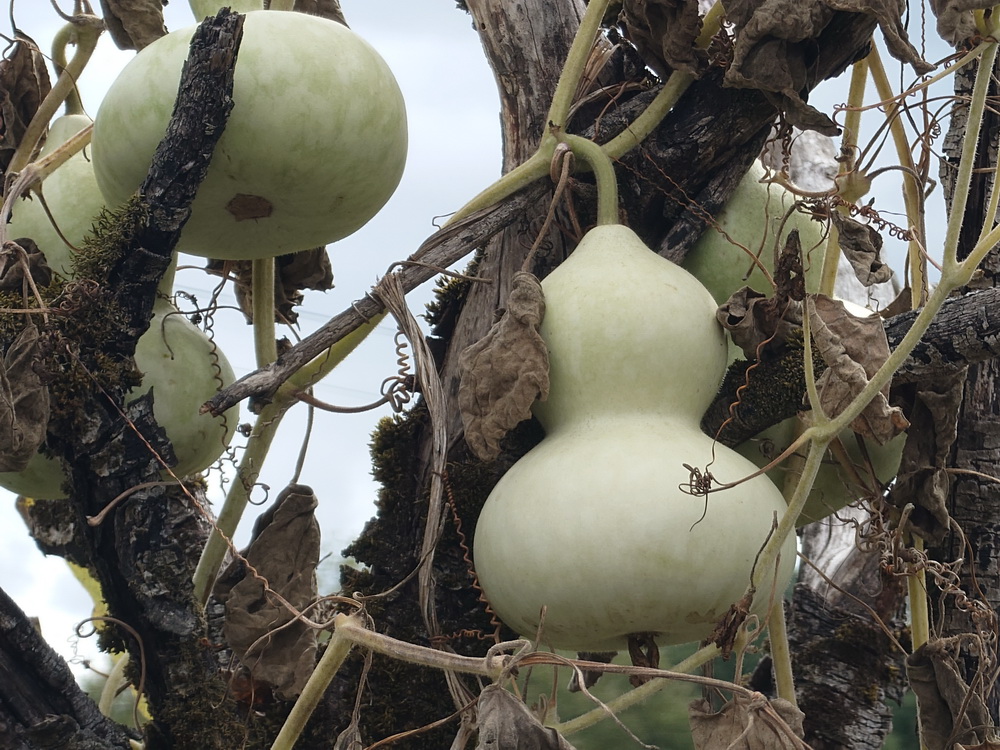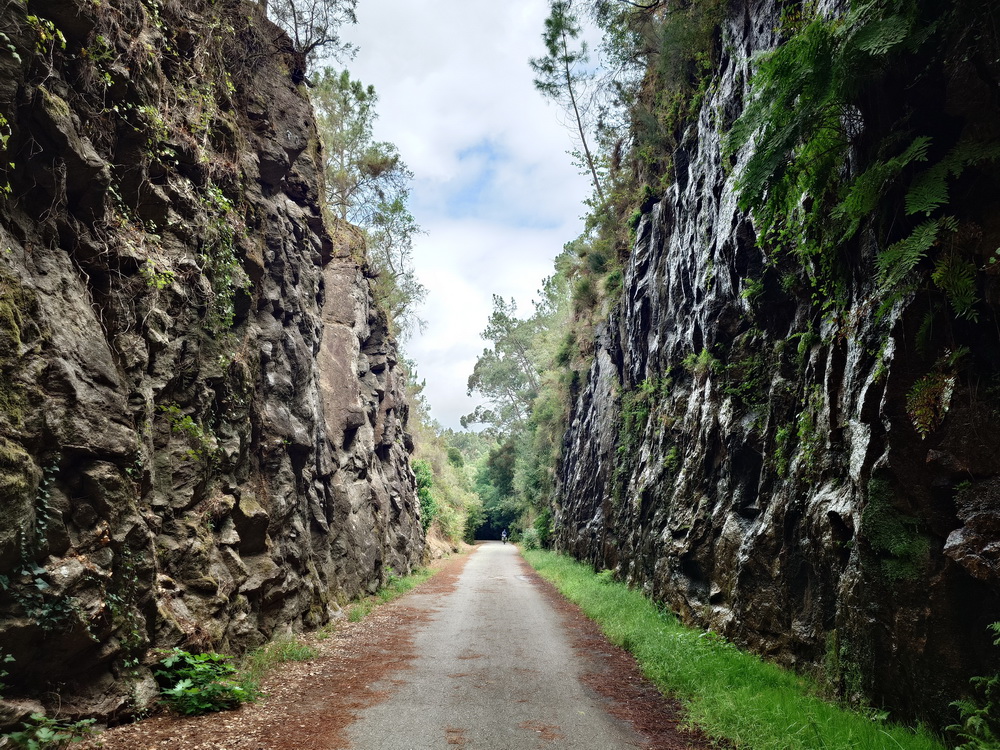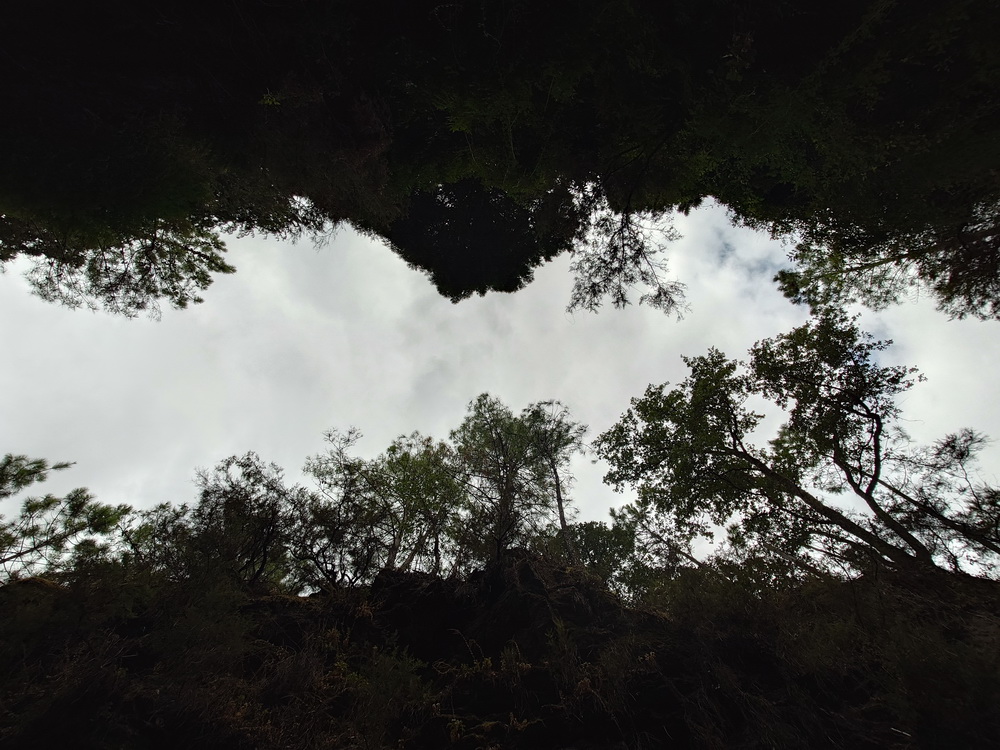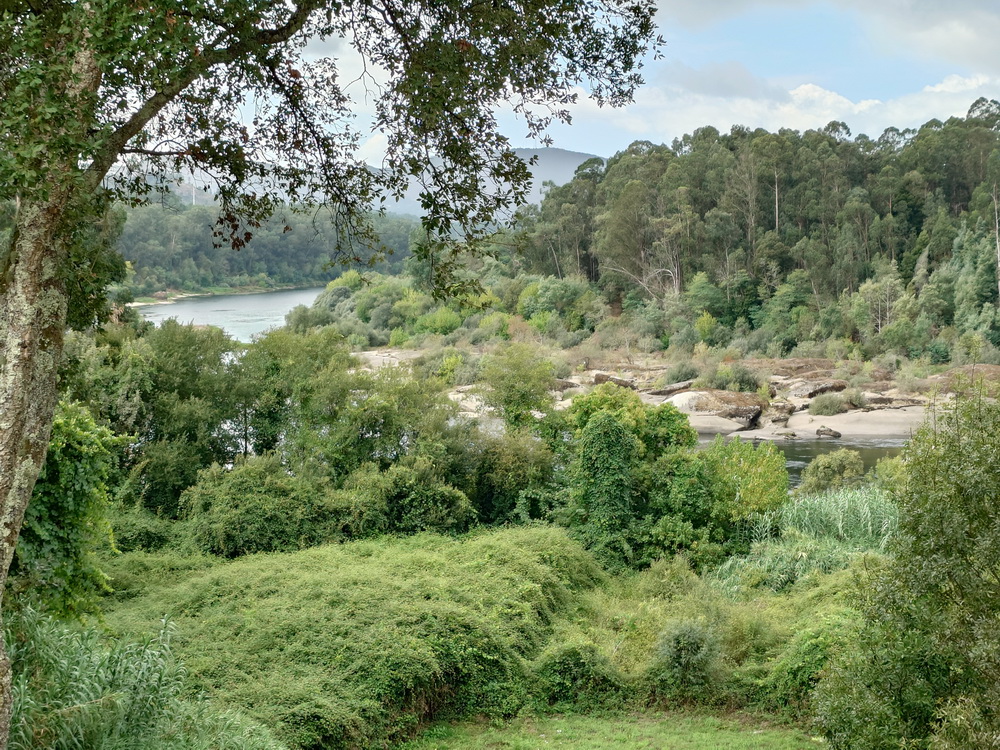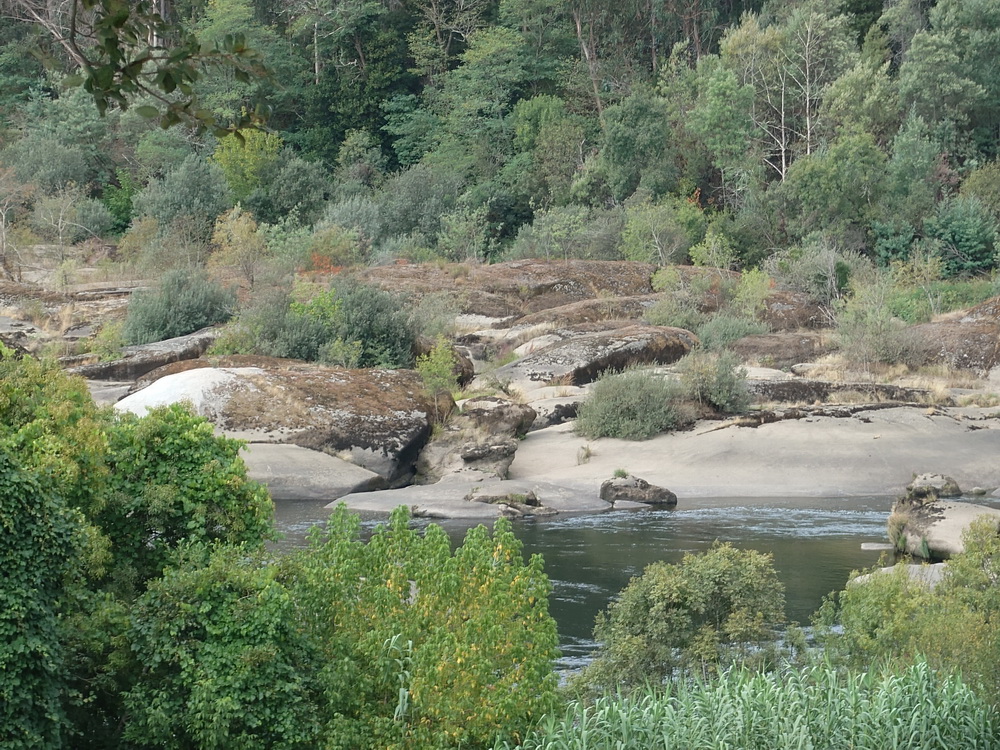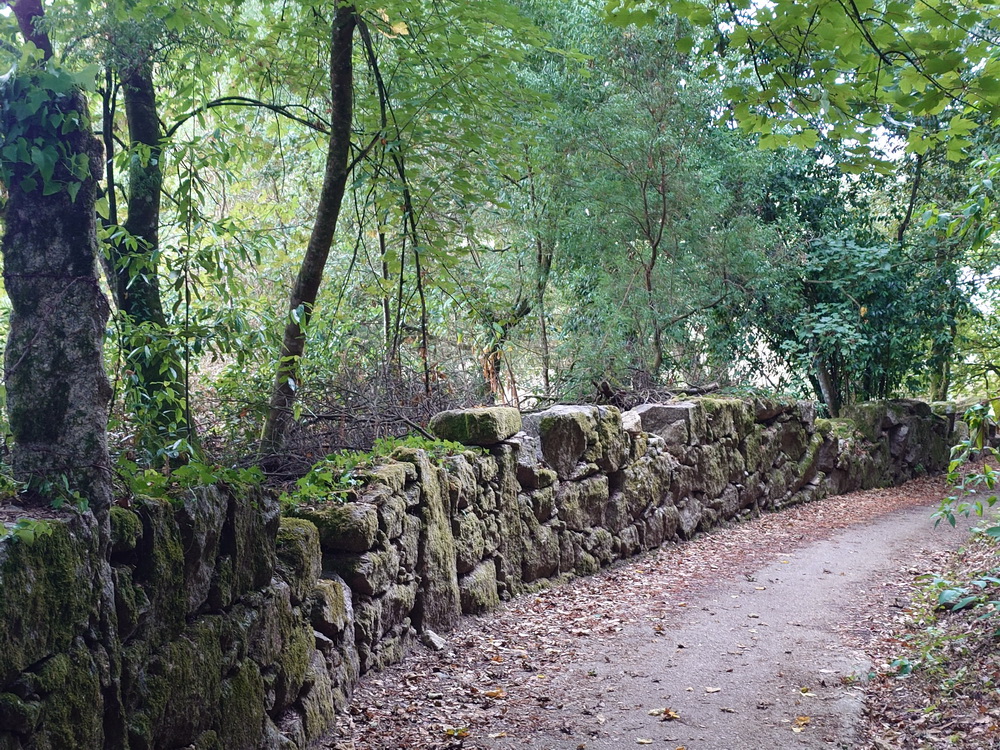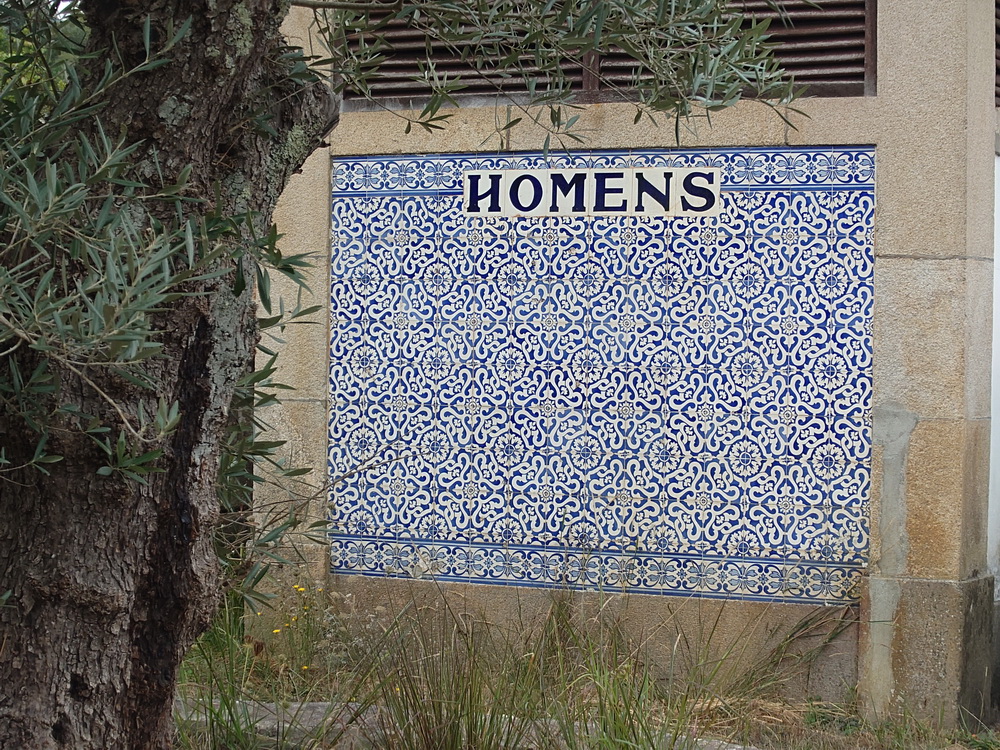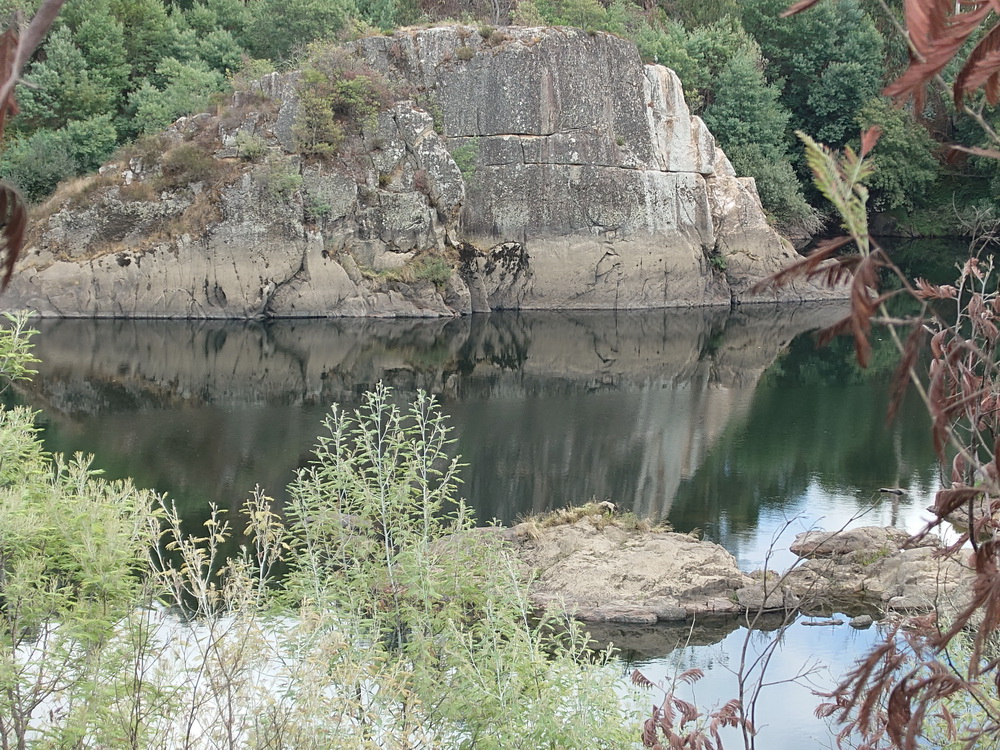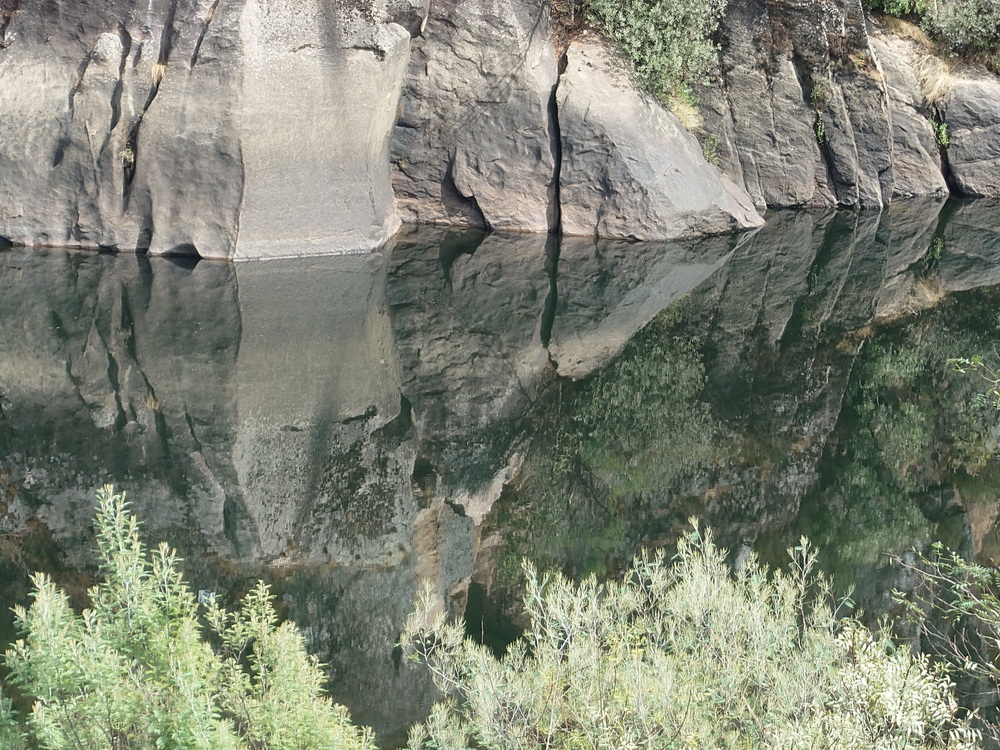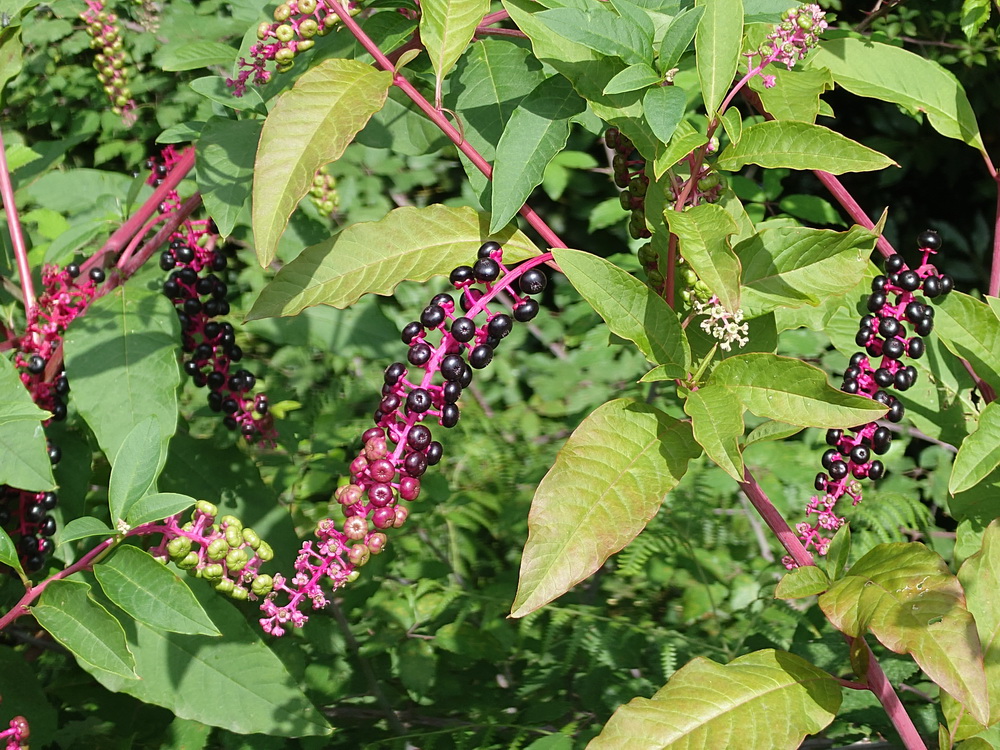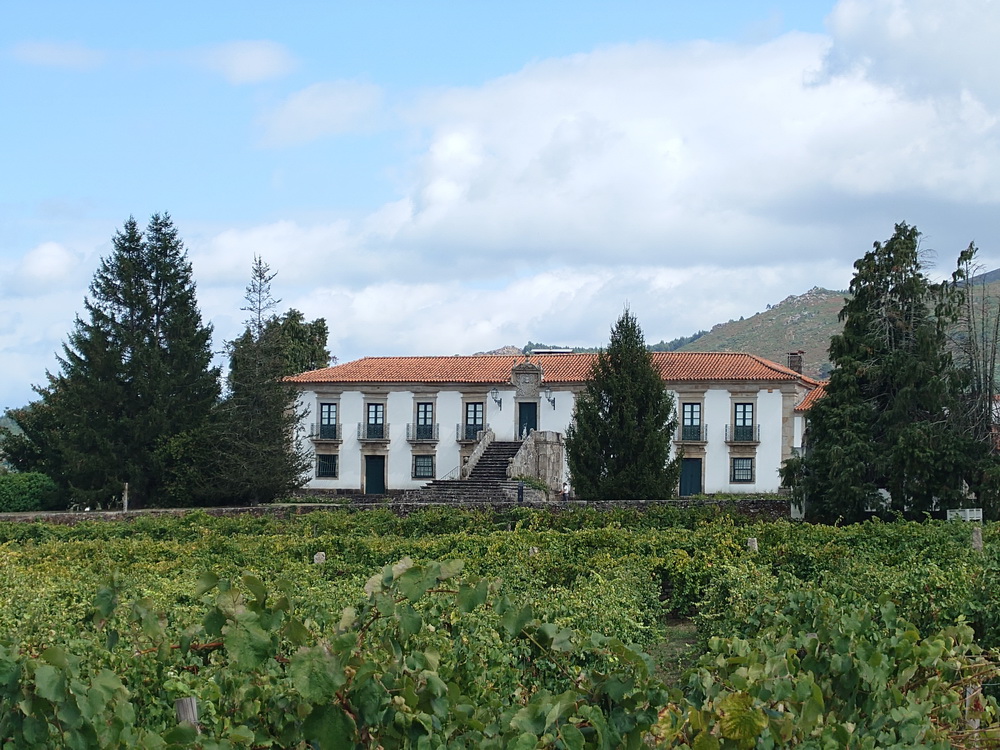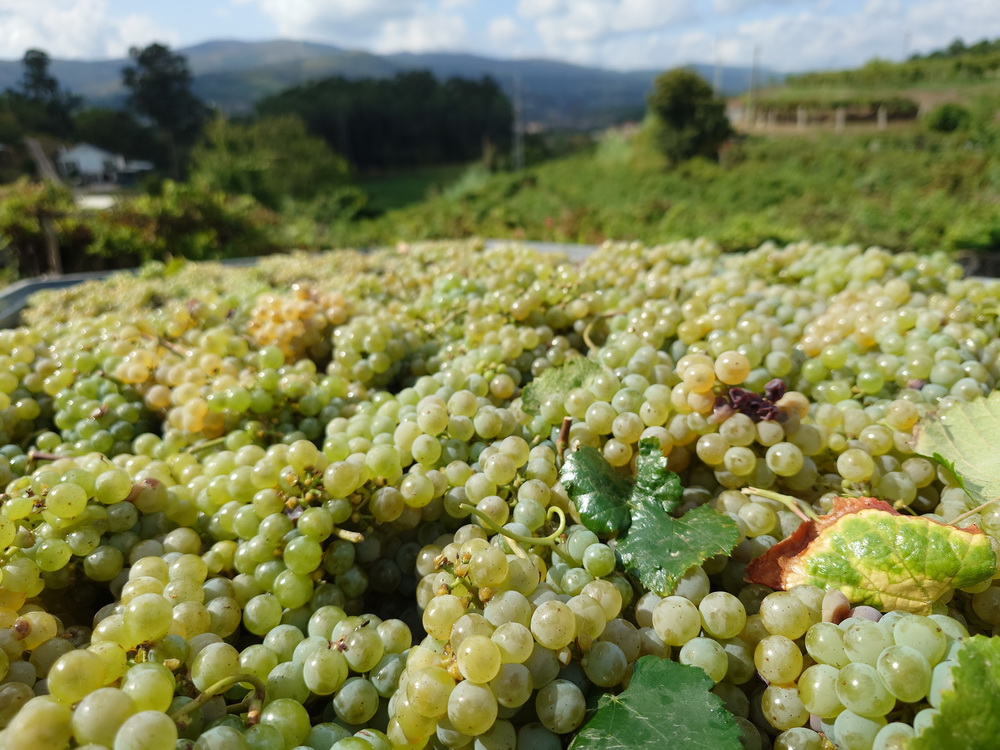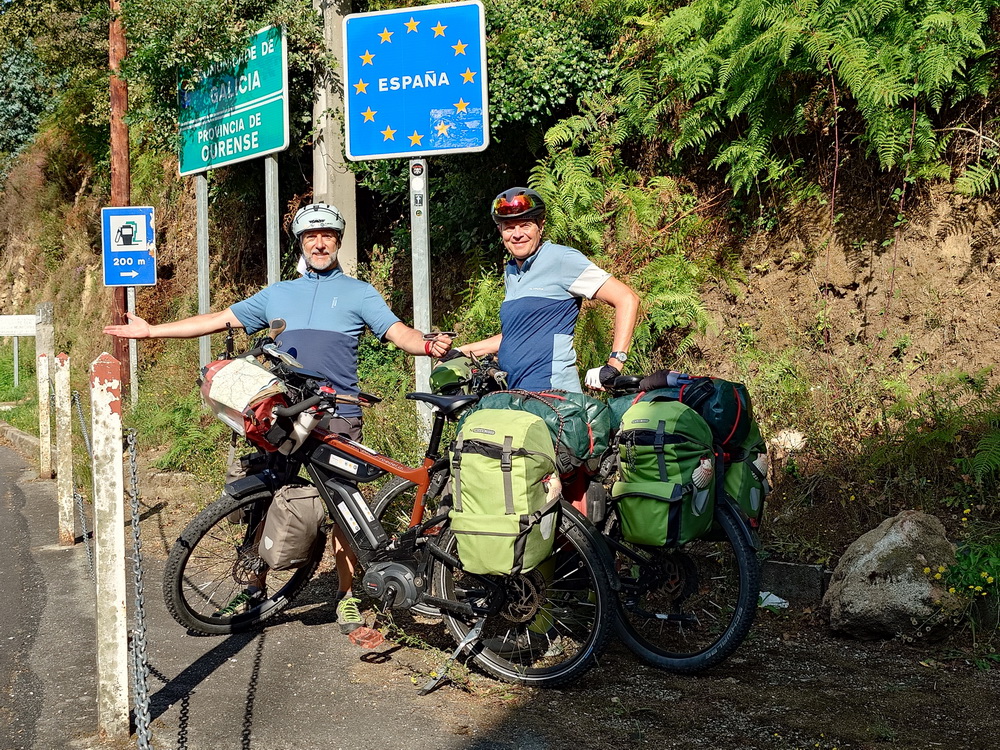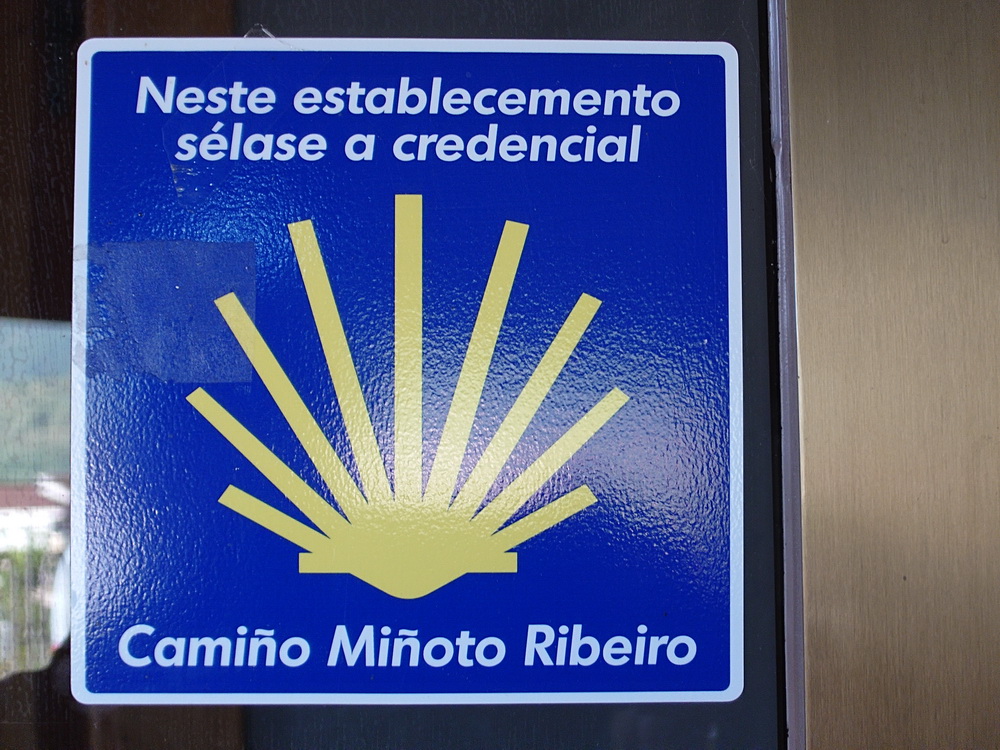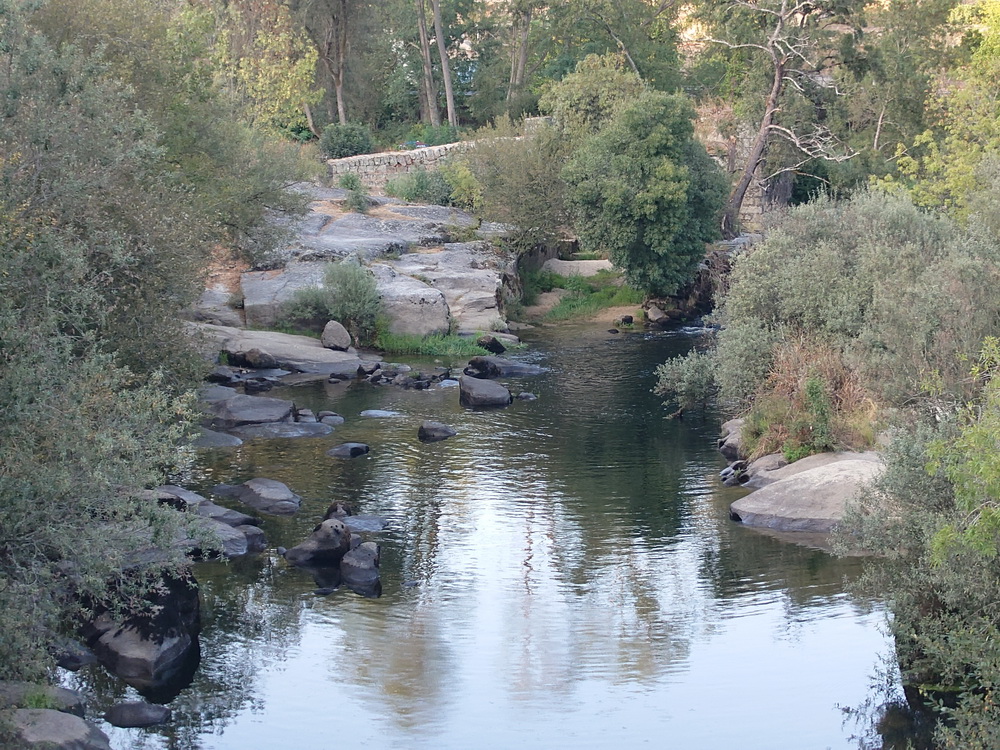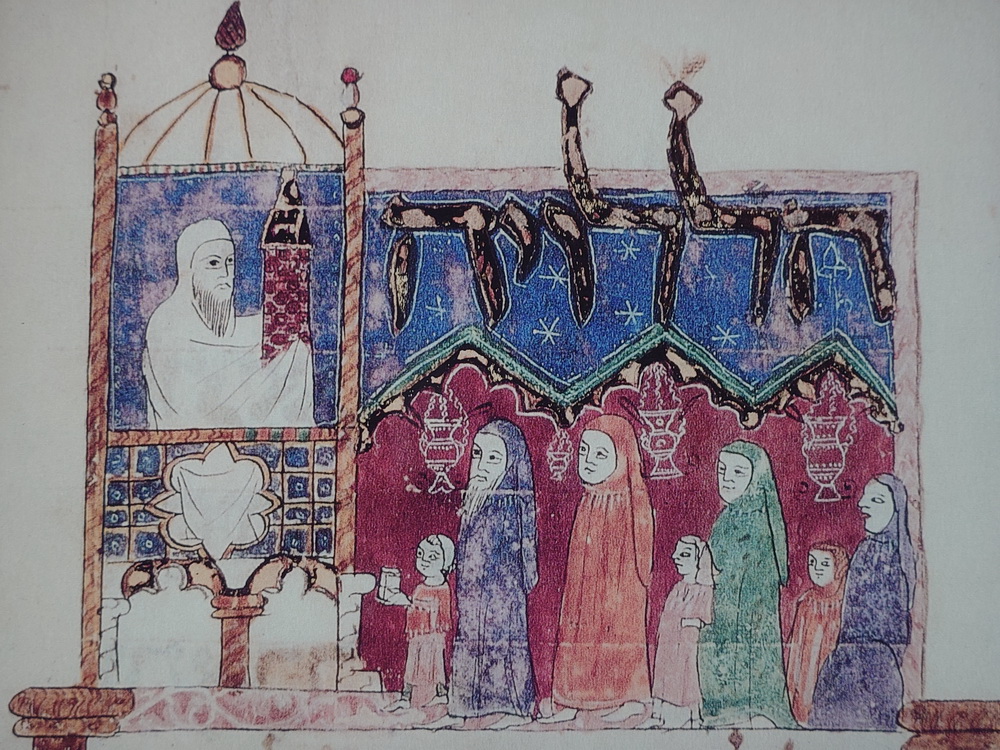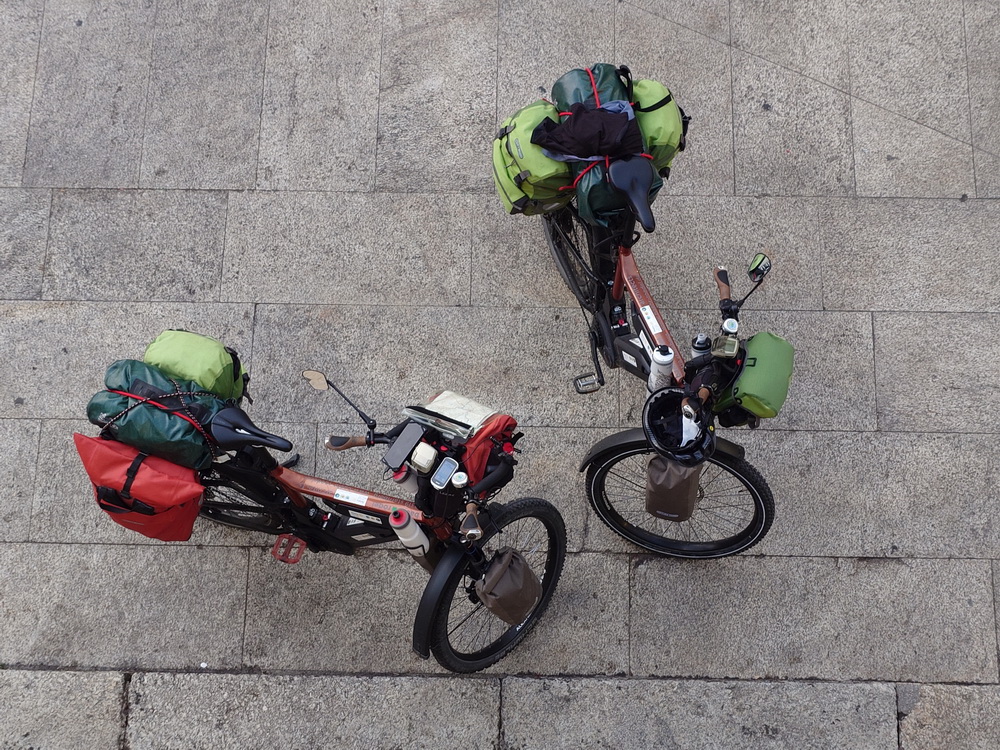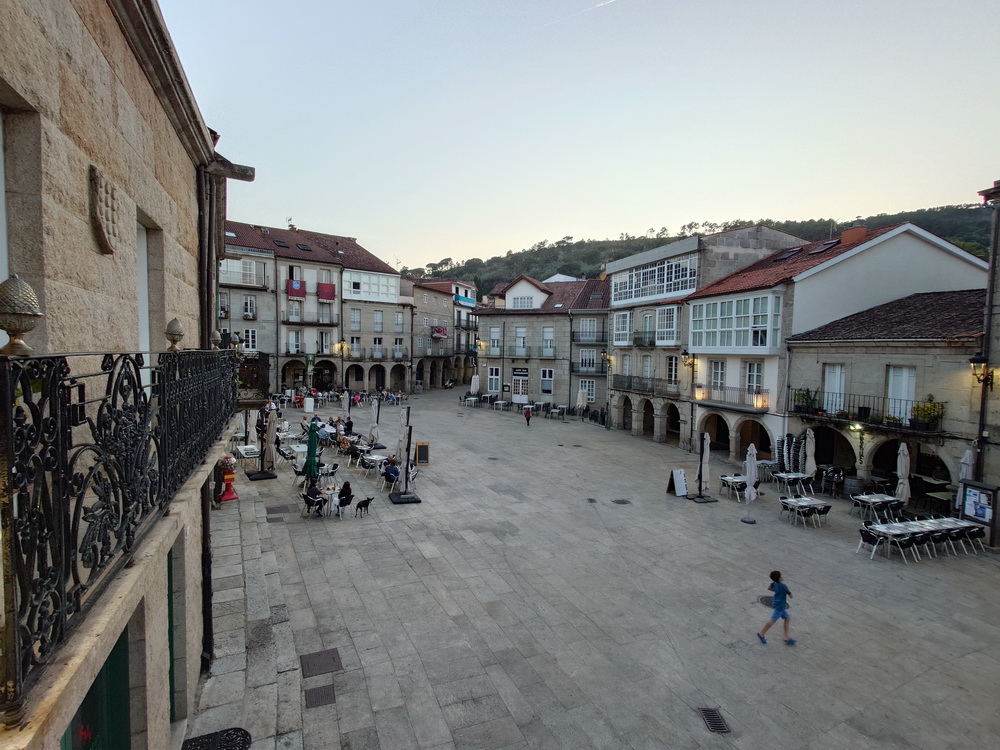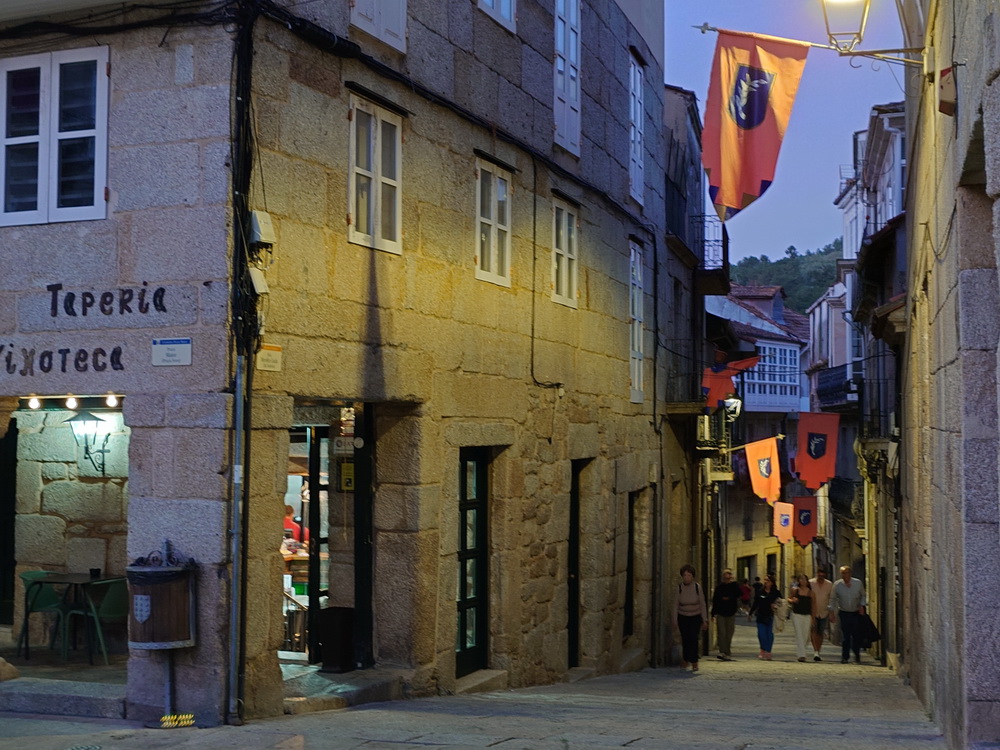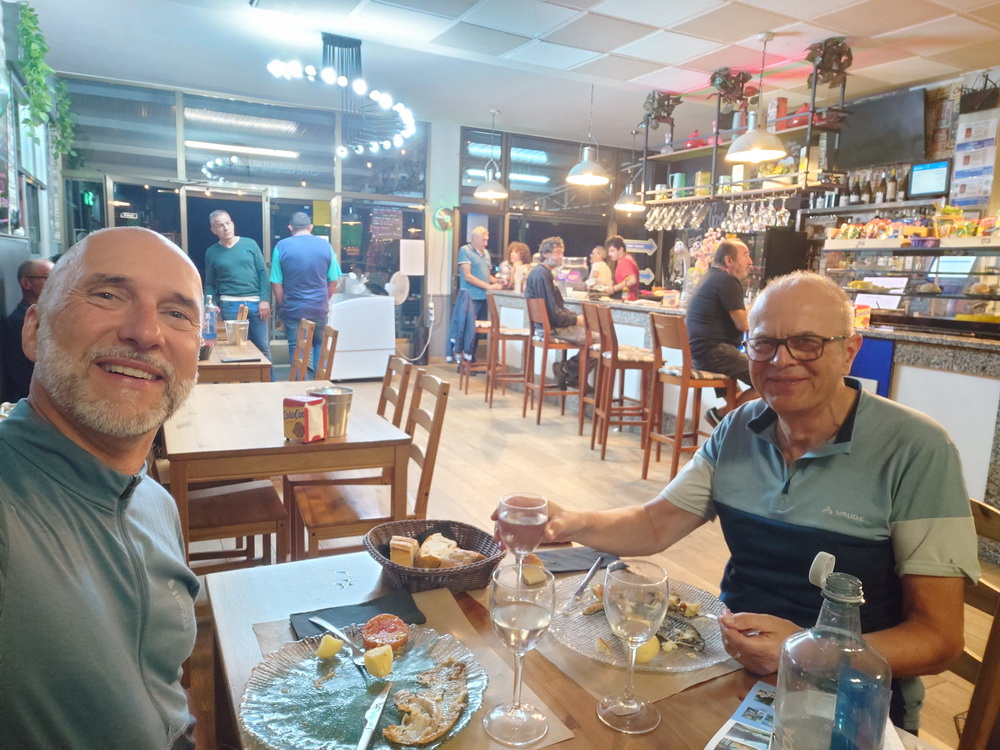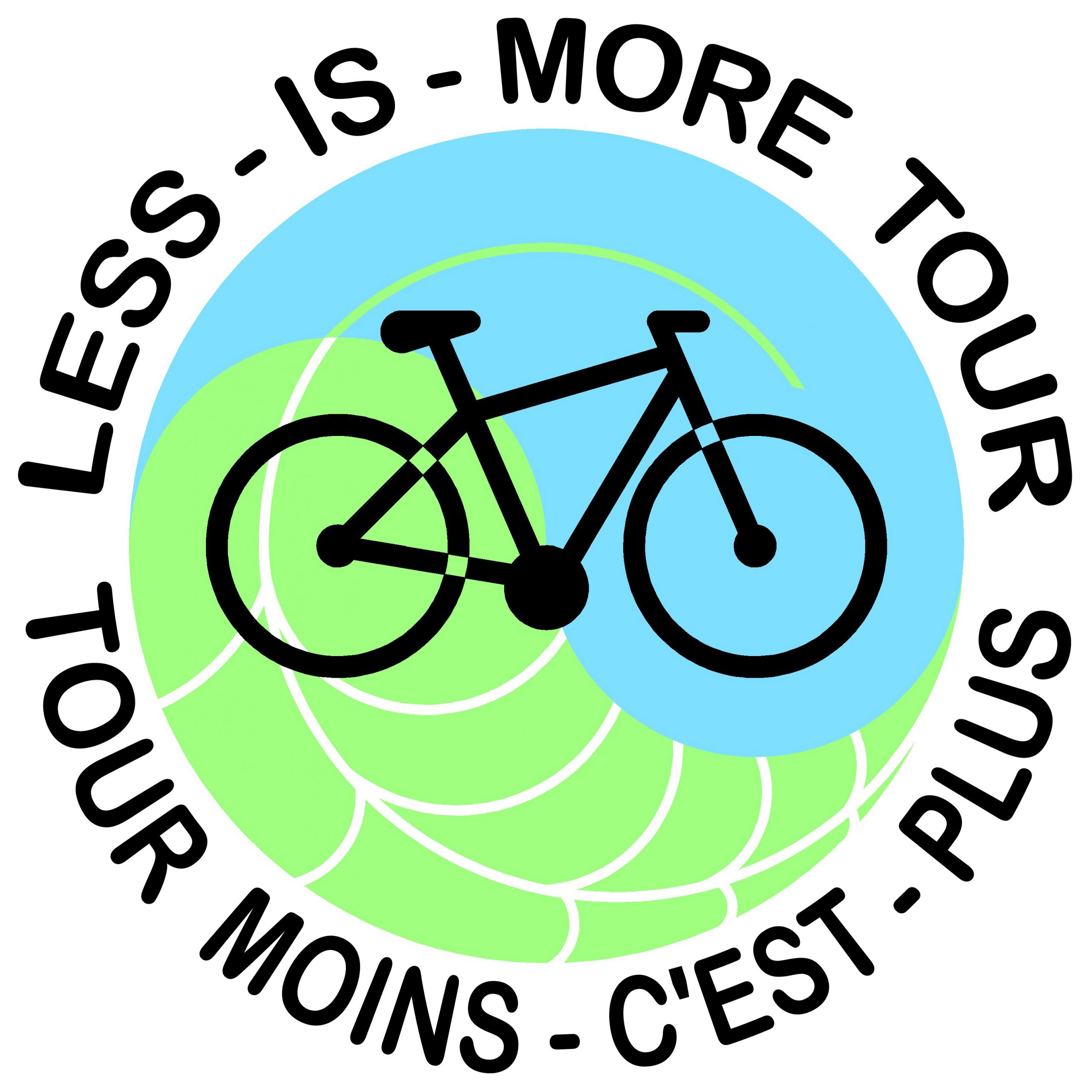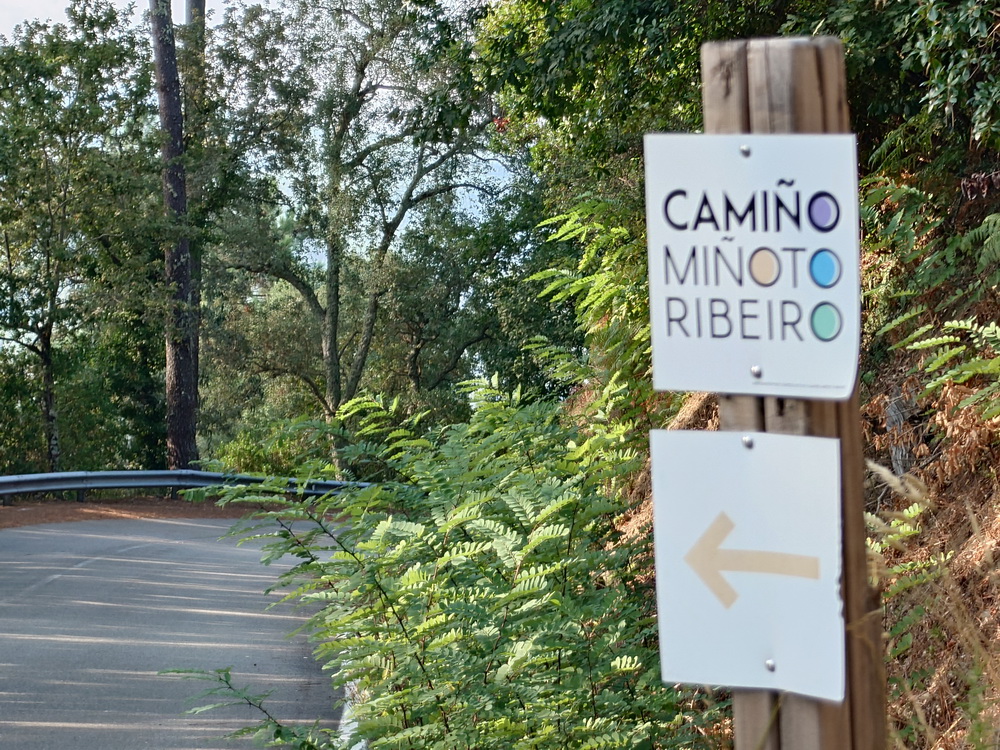4th of September we changed our plans and decided not to take the Camino Portugues back to get to the north coast of Spain, because we had talked last evening to two bikers from Canada, who told us that they couldn’t advance well on the Camino Portugues due to the enormous number of pilgrims, and we had made the same experience in the other direction.
There was an old railway track along the Rio Minho on the Portuguese side which was transformed into a bike path, which looked very tempting to us as following a river usually meant smooth slopes. We had breakfast in the town of Valença which had already the typical charm of Portuguese cities with some house-façades being covered with tiles called “Azulejos”. The city started to fill up with tourists because on this day there was a medieval market, and we thought we’d better get on the road because we were not ready to join more crowds.
Being on the bike-path of the former railway line felt like having gained our bikers freedom again. But not for long: each farmers trail crossing our way was marked with a wooden barrier to prevent other traffic from entering the path. It meant that once we had gained some speed for our heavy bikes plus luggage we were each time stopped again to pass this hurdle.
We remembered the same strategy of hurdles on another bike tour in Portugal which we once had done with Robert’s nephew François and his wife Shahnaz along the river Dão, where they had pulled a trailer with their dog behind their bike and it was each time difficult to pass around these barriers.
As the river Miño represented the border between Spain and Portugal historically each village had at least one fortified tower or even a complete city wall surrounding the town. Like the cities of Tui and Valença were facing each other on the other river bank with their impressive forts, the city of Salvaterra de Miño was the counterpart to the fortified city of Monção. We decided to continue as long as possible on the Portuguese side and had lunch in Monção.
The luxury of having been able to avoid watching any TV during this trip can’t be continued once you enter a Spanish or Portuguese restaurant, because there are always huge TV screens dominating the room and can be seen from any direction and heard with their loudspeakers. Our lunch break was covered by the news of the horrible accident of the cable car in Lisbon from all possible perspectives. Having biked more than 3.000 km without any accident you turn again very humble when you realize how fate can quickly change life’s destiny.
A Brazilian who had seen our bikes from the terrace was very interested in our “Less-is-More-Tour”. He followed us and wanted to explain us the way out of town, and then biked ahead so we could follow him. He showed us where the thermal baths were and that even the Romans knew already about the hot springs. The park was fairly newly renovated with wooden decks bridging down from the steep city walls, but the bath looked like it had not seen any renovation since it was built in the 1980-ies.
The closer we got to the mountains the more the river Miño had cut its river bed into the granite rocks creating a wild canyon. The bike path turned into an ecological learning trail about the biodiversity along the river shores and right by the explanation board of the snakes I nearly stepped onto one which disappeared very quick into the bushes.
The canyon got too steep and the bike path ended. We had to climb uphill into the vineyards where the harvest of the grapes had begun. The eucalyptus forests with their wonderful smell changed into pine forests, and we reached in the late afternoon the border to Spain. After sunset we finally arrived in the city of Ribadavia, while we still hadn’t found accommodation. Luckily the tourist office was still open after 7:00 and they were so friendly to help us to find the only place left which still was offering a bed for the night. They called the hostel and fixed everything for us. We just wanted to leave to go there after a long day of biking, but they invited us to join a special evening in their historical museum. As the building was located in the former medieval Jewish quarter of the city they had a museum about the history of the Jewish past. This evening they provided a buffet of sweets prepared by a chef cook which were influenced by the Jewish eating culture to show how Spanish cooking traditions had Jewish origins.
Looking back in history the Romans were already world champions concerning integration. They could not have governed their huge empire if they would not have accepted other cultures and religions beside their own. Later under Arab rule on the Iberian Peninsula the coexistence of the Jewish and Christian culture was also accepted. Unfortunately, the “Reconquista” and the Spanish Inquisition made an end to this way of living side by side, and during the dark medieval ages the acceptance of Jewish culture ended by torture and expulsion.
It is sad to see that these tendencies are repeating themselves again and again in history, and the enriching cultural exchange is seen as threatening. Especially after having seen so many different cultures, languages and traditions along our “Less-is-More-Tour” we would hope that more people were sharing such an experience to understand that mankind has much more in common than people believe what is separating them from each other.
